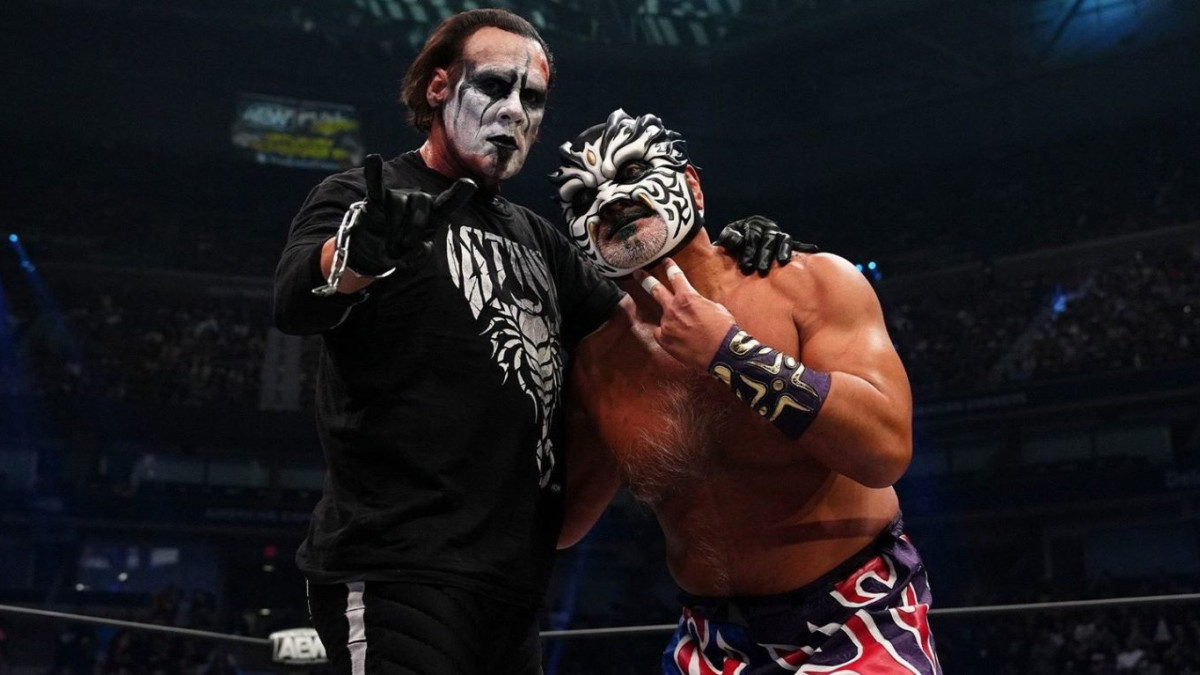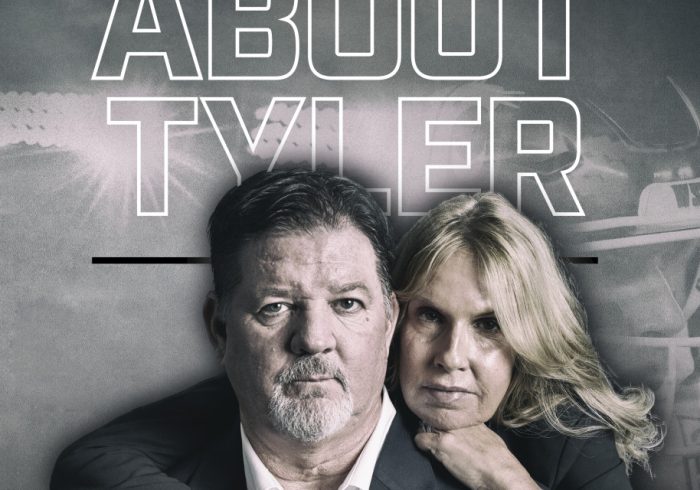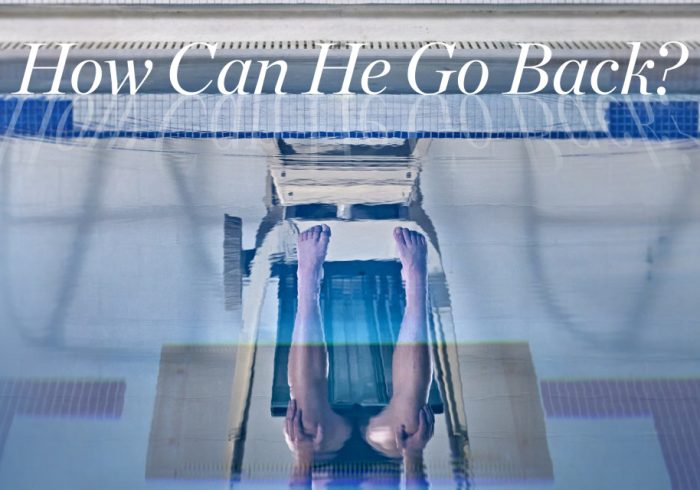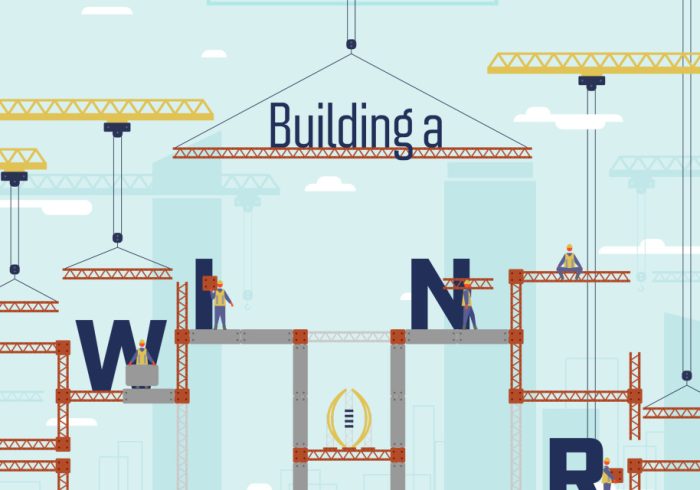AEW went back in time, reuniting two legends that rose to prominence against each other.
It took place just over a week ago on the “Grand Slam” edition of Rampage during the tag-team match with Sting and Darby Allin and the House of Black. Near the end of the match, while Sting was handcuffed and unable to defend himself, Buddy Matthews grabbed his baseball bat to inflict even more damage. But before the industry icon could be knocked into oblivion, he was rescued from impending doom with a save from The Great Muta.
“That was a moment,” says Sting, whose name is Steve Borden. “I had flashbacks when he stepped into the ring. Seeing him face to face, it took me back in time.”
Following their reunion in AEW, Sting will return to Japan for Muta’s retirement show, which is set to take place at Pro Wrestling NOAH’s “The Great Muta Final Bye-Bye” event on Jan. 22 in Yokohama.
“I know my days are numbered, so I’m trying to make the most out of the time left and give the fans everything I have before this wave comes into shore for good,” says Borden, 63. “I’m grateful that Muta was able to be here with me in the United States. That’s a memory I’m going to hold onto, and it signifies the end of our era. I’m looking forward to having one last grand hoorah with The Great Muta, especially in Japan.”
Sting will team with Muta in a six-man tag in Yokohama, and it is possible that the third man on their team will be another AEW star.
“I’m trying to get Darby Allin to come with me,” Borden says. “It’s such an honor, especially since that will be his last night as The Great Muta character.”
Muta’s arrival in AEW brought with it an avalanche of nostalgia, which was starkly juxtaposed with the new-age way the moment was planned—over Zoom. There is considerable depth to the Sting-Muta story, which dates back to the NWA in 1989.
“It’s been over 30 years, but I can still feel that excitement of sharing the ring with him,” Borden says. “The first time we were ever together, we knew there was a chemistry there. It didn’t matter if we were in Philadelphia or Fukuoka. There was a magic, that’s for sure.”
The Sting-Muta feud peaked in October 1989 at Halloween Havoc, a seminal stretch that acquainted both face-paint-wearing men to the main event, a place they have resided ever since. With the great Bruno Sammartino as special guest referee, Ric Flair and Sting teamed up to defeat Terry Funk and Muta in a Thunderdome match. While NXT still airs a Halloween Havoc–themed episode, it pales in comparison to the history of the event, with this match particularly standing out.
Taking place under the NWA banner, the original Halloween Havoc main event featured a striking blend of established and emerging talent, as the inimitable “Nature Boy” teamed with a then 30-year-old Sting against Funk and Muta, who was 27 at the time. There were plenty of wrestling luminaries that night at the Philadelphia Civic Center, including Jim Ross, who handled the play-by-play, along with Bob Caudle on color commentary, as well as the legendary Gordon Solie on the broadcast and “Playboy” Gary Hart in Muta and Funk’s corner. The match elevated Sting and Muta to another tier of superstardom.
Over the years, Halloween Havoc became a staple for World Championship Wrestling, serving as the launching pad to some unique concepts and matches. It was home to the Chamber of Horrors match, a Coal Miner’s Glove match, a Monster Truck match and even the most frightening match ever—the much-derided 1998 main event pitting Hulk Hogan against the Ultimate Warrior. There were also all-time classics, with Eddie Guerrero–Rey Mysterio from ’97 remaining a bout with few equals. Randy Savage–Dallas Page from that same card was also phenomenal, as well as immensely important to the long-term success of Page. Matches that still resonate decades after taking place at Halloween Havoc also include the Texas Death Match pitting Vader against Cactus Jack from ’93, the Steve Austin–Dustin Rhodes masterpiece from ’91 and the Steiner Brothers–Nasty Boys encounter from ’90. And the event held significance right from the beginning by pairing Flair and Sting against Funk and Muta.
Muta had defeated Sting for the NWA World Television Championship a month before, so revenge was in the air. That match also put an end to the severely underrated Flair-Funk feud, appropriate for a pay-per-view that was advertised with a “Settling the Score” tagline.
“I just about killed myself that night,” Borden says. “I always had great chemistry with Ric, and, when you add Terry Funk into the mix, it’s a whole new element of greatness. Those are amazing memories.”
That effectively marked the beginning of Sting’s main-event run, as he would close out December’s Starrcade against Flair and become WCW’s signature star in the 1990s. For Muta, this run introduced him to fans in the United States and brought his popularity to new heights.
Only a few months later, Sting would defeat Flair and become world champion. Muta’s reign atop New Japan would officially start in 1992, when he defeated the great Riki Choshu for the IWGP heavyweight championship. Muta and Sting would also work together in Japan, most notably headlining the WCW/New Japan Supershow in ’92, tagging against the Steiner Brothers.
“Muta has transcended wrestling,” Borden says. “He became a household name in Japan and America. Even last week in AEW, people remembered him. He was worried about that. ‘Will they remember?’ he asked me, and I said, ‘Of course, they’ll definitely remember.’
“I set Muta apart from everyone else in my book. He helped me become a household name in Japan, too.”
The match in Japan was a request from Muta, one that Sting eagerly accepted.
“When it’s Muta asking, I’ll always say yes,” Borden says. “Every time we speak, it’s like no time has passed. I know we’re older now, but it doesn’t feel that way when we’re together.
“It’s such an honor. He is one of the greatest to ever do this.”
Justin Barrasso can be reached at [email protected]. Follow him on Twitter @JustinBarrasso.



